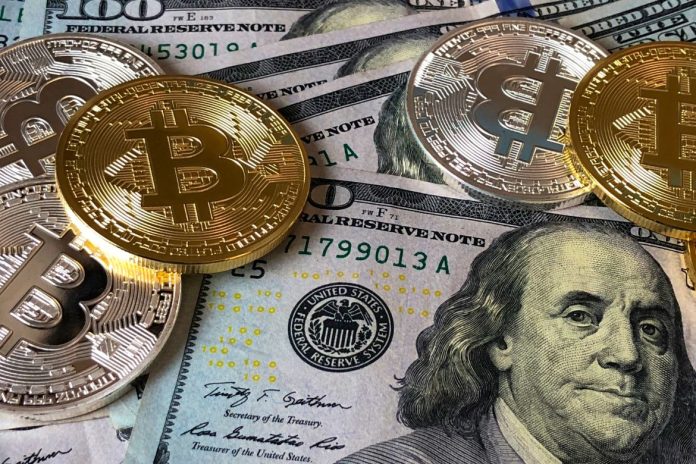What Are Altcoins, Exactly?
The term “altcoin” refers to any cryptocurrency that isn’t Bitcoin. It’s short for “alternative coin,” and covers a massive array of digital assets — from established names like Ethereum and Cardano to meme coins like Dogecoin and Shiba Inu. While some altcoins aim to improve upon Bitcoin’s limitations, others are focused on entirely different use cases such as smart contracts, privacy, scalability, or decentralized applications (dApps).
As the crypto ecosystem evolves, altcoins have grown from speculative afterthoughts into major players, often introducing innovations that Bitcoin’s original structure cannot support.
Ethereum: The Leader of the Pack
Ethereum remains the most dominant altcoin by market capitalization and influence. Its introduction of smart contracts revolutionized the blockchain space, enabling the rise of decentralized finance (DeFi), NFTs, and more. Ethereum’s transition to Proof of Stake (PoS) has also made it more energy-efficient and future-ready.
Despite high gas fees and scalability issues, Ethereum continues to attract developers and investors alike. It is often seen as the “tech platform” of the blockchain world, whereas Bitcoin is the “store of value.”
Functional Altcoins: Solana, Cardano, and Avalanche
Several altcoins aim to improve where Ethereum struggles — especially with transaction speed and fees.
- Solana boasts fast transaction times and low costs, making it a favorite for NFT and DeFi developers.
- Cardano emphasizes peer-reviewed development and academic rigor. It has a strong community and long-term focus.
- Avalanche provides high scalability with its unique consensus mechanism and is gaining traction among developers building custom blockchains.
These projects are more than just “Ethereum alternatives” — each brings something unique to the ecosystem.
Stablecoins and Utility Coins: A Different Breed
Not all altcoins are meant for speculation. Stablecoins like USDC and USDT aim to provide stability by being pegged to fiat currencies, making them essential for crypto trading and DeFi applications.
Utility tokens such as Chainlink (used for providing real-world data to smart contracts) or Filecoin (used for decentralized storage) have actual functions that give them long-term value — at least in theory. Evaluating these coins often requires understanding the utility behind them, not just the hype around price movements.
Meme Coins: Laughing Their Way to the Market
Meme coins like Dogecoin and Shiba Inu were created as jokes — but have achieved massive popularity and multi-billion dollar market caps. Driven by social media hype, celebrity endorsements, and speculative trading, these coins can produce wild profits — and equally wild losses.
They lack clear use cases and long-term roadmaps, but they reflect a growing trend: the intersection of internet culture and decentralized finance. While they shouldn’t be ignored entirely, investors should treat them with caution.
How to Evaluate Altcoins: Beyond Market Cap
When analyzing altcoins, it’s important to go beyond surface metrics. Consider:
- Technology – What problem does the altcoin solve? Is its codebase innovative or derivative?
- Development activity – Is there a strong team and consistent updates?
- Community support – A vibrant, active community often indicates lasting interest.
- Partnerships and adoption – Are businesses or developers actually using the coin?
- Tokenomics – How is the supply structured? Is there inflation? How are tokens distributed?
Blindly chasing price pumps often leads to losses. Informed investing, based on fundamentals, is still the safer path — even in crypto.
Regulatory Risks and Legal Clarity
Unlike Bitcoin, which has been widely accepted as a digital commodity, many altcoins sit in a regulatory gray zone. In the U.S., the SEC has hinted that some may be securities, which could subject them to stricter rules and enforcement actions.
This uncertainty creates risk for exchanges, developers, and investors alike. If an altcoin is deemed an unregistered security, trading it could lead to legal trouble — or force exchanges to delist it.
As regulations evolve, it’s critical to stay informed and understand which projects have taken steps toward compliance.
Are Altcoins Still Worth It in 2025?
Absolutely — but with conditions. While Bitcoin remains the flagship, altcoins offer exposure to new technologies and niche innovations. From programmable finance to gaming ecosystems and privacy tools, altcoins often serve as testing grounds for the next generation of blockchain use cases.
However, not all altcoins are created equal. Many will fade away, but a few may become foundational pieces of the digital economy. Diversification, research, and a long-term mindset remain your best defenses against the market’s volatility.
More Than Just Bitcoin’s Sidekicks
Altcoins are no longer just “alternatives” — they represent the diversity and creativity of the entire blockchain industry. Whether you’re an investor, developer, or crypto enthusiast, understanding their purpose and potential can help you make more informed decisions in this fast-changing landscape.
Keep your eyes on how the industry evolves, and don’t fall for short-term hype without doing your homework. The altcoin space is filled with opportunities — and landmines — depending on how wisely you navigate it. Stay informed and read all types of websites – economic, scientific sites, tech, etc.









